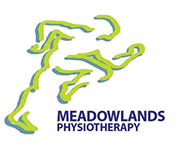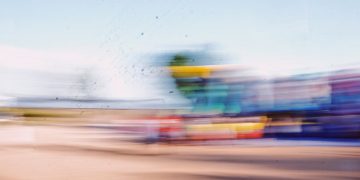Suffer from vertigo, or loss of balance?
Vestibular rehabilitation (VR) can help you keep your feet on solid ground. Read on to learn more about vestibular rehabilitation, how it works, and how it can help you, or book your appointment today with Meadowlands’ vestibular rehabilitation physiotherapist, Laura Baillie & Kerrie Corrigan.
What is vestibular rehabilitation?
TYour vestibular system includes your inner ear and parts of the brain that relate to balance and eye movements. This complex system can be damaged by disease, injury, aging, or illness causing a range of symptoms and related issues like poor coordination or dizziness.
Vestibular rehabilitation, or vestibular rehabilitation therapy (VRT), is a highly specialized form of physiotherapy that focuses on treating and managing vestibular disorders and related conditions. VR uses proven exercises to reduce dizziness, vertigo, gaze instability, falls, and increase balance, coordination and quality of life.
VR is effective at treating or managing:
- Vertigo
- Dizziness
- Inner ear disorders
- Balance disorders
- And related conditions
How does vestibular rehabilitation work
Whenever possible VR seeks to treat vestibular function directly, however in many cases it is very difficult or impossible to restore vestibular function, particularly when a patient’s vestibular function has been diminished due to serious injury or illness.
When healing is not possible, vestibular rehabilitation teaches the patient’s body and other senses to compensate for diminished vestibular capabilities.
Much in the same way that a blind person can learn to rely on their hearing to navigate, or a deaf person may lip-read, vestibular therapy will train your body to use your sense of sight, and somatosensory abilities to counteract the dizziness caused by vestibular deficiency.
What to expect
The first step of vestibular rehabilitation is to accurately assess the patient. This is important for all forms of physiotherapy but double so for vestibular rehab. Neurological health, and condition of the brain stem, cerebellum, vision, and bodily awareness are all vital. Diminished function in any of these vital parts of the nervous system will likely limit the degree of success that vestibular rehab will have. It is important to manage expectations based on the medical reality, and for patients who can benefit from vestibular rehabilitation to set ambitious but achievable targets.
Creating a personalized program relies on an evaluation conducted by a specialized physiotherapist - different vestibular disorders require different approaches.
Although each patient is unique, some common treatment approaches include:
Habituation
Habituation is used to manage dizziness caused by motion (walking, standing, or moving the head) or visual stimuli (watching TV, patterns). Habituation trains the body to deal with motion and stimuli by exposing the patient to it in a safe and controlled environment. Over time the patient’s brain will learn how to compensate for the effects of movement and visual stimuli without dizziness.
Gaze stabilization
Gaze stabilization trains the patient to control their eye movements to prevent their vision from ‘bouncing’, ‘jumping’, or moving when attempting to move their head or shift their gaze. Generally the patient will look at an object while moving their head, or follow a moving object with their eyes. For patients with seriously diminished or no vestibular function, VR will help train their body to compensate for their diminished ability through sensory substation.
Balance training
Balance training is designed to improve steadiness so that patients can take care of themselves and live their lives without losing independence. Exercises and movements are designed to challenge the patient in order to improve balance, but are conducted in a safe environment under the supervision of a specialized physiotherapist. Common exercises include using visual clues, stationary poses and dynamic movements, isolated movements (moving only one limb or joint), compound movements (moving different joints and muscles together), and performing tasks while balancing.
How does VR help?
In some cases VR will help restore vestibular function by healing the underlying condition. Depending on the patient’s medical history this may not always be possible and many patients will naturally begin to use their other senses to compensate and correct their vestibular function over time. VR will complement and enhance this natural process so that patients can reclaim their lives faster. For patients who have not naturally begun compensating, then vestibular rehab will help train their bodies to do so.
Benefits of vestibular therapy
The benefits of vestibular rehabilitation depend on the severity of the vestibular damage or disorder, and the effectiveness of the rehabilitation process. For very severely impacted patients who are unable to walk or stand, the benefits can be immense.
Vestibular rehabilitation gives patients their independence and confidence back, and allows them to live without pain or discomfort. Conditions that make walking and standing difficult can be very isolating, particularly for older patients.
VR also reduces the risk of injuries caused by diminished vestibular function. A diminished ability to balance can result in an increase in the risk of slips and falls, which can lead to broken bones, injured joints, ligament damage, concussions, muscle damage, bruising, cuts, further vestibular damage, or worse.
These potential injuries are especially dangerous to the elderly, who are also disproportionately more likely to suffer from vestibular deficiency.
What to expect from VR
Initially, VR can be an uncomfortable experience. This is because a large part of VR relies on acclimatizing patients to the exact conditions which trigger their dizziness such as movement or visual stimuli. Overtime this discomfort diminishes, and the patient is able to better cope with the triggering conditions in their everyday life.
Complimentary physiotherapy and barriers to success
The success of VR can be impeded by other factors including pain, sedentary lifestyle, and other medical conditions. In some cases it is advisable for the patient to pursue additional treatment methods designed to help them cope with pain, limited range of motion, and a sedentary lifestyle. This may include more general physiotherapy, or even acupuncture, yoga or Pilates.
Medications can sometimes cause or exasperate balance issues, which is why it is vital that you speak to your doctor.
Vestibular rehab in Ancaster
Physiotherapists Lauri Baillie, Kerrie Corrigan and the team at Meadowlands Physiotherapy offer specialized vestibular rehab to patients in the Ancaster, Ontario area. Contact Meadowlands Physiotherapy if you suffer from diminished vestibular capabilities.
Sources:
FAQs
(1) Who is a good candidate for Vestibular Rehab?
Patients referred for Vestibular rehab therapy are people who have been suffering from vertigo, dizziness, Meniere's syndrome, benign paroxysmal positional vertigo (BPPV). Other candidates would be people who have suffered a stroke, or brain injury.
(2) Does Insurance cover vestibular rehabilitation therapy?
Vestibular rehabilitation therapy is typically performed by specially trained physiotherapists or chiropractors. Treatments by these types of professionals are often covered by insurance plans. Also a good idea to check your coverage before starting treatment.
(3) What are the goals of Vestibular Rehabilitation Therapy?
- Enhance gaze stability
- Enhance postural stability
- Improve vertigo
- Improve activities of daily living
Explore More on Vestibular Rehab
Everything You Need to Know About Vestibular Rehabilitation
Vestibular rehabilitation therapy is a highly specialized form of physiotherapy that helps patients to manage dizziness...
Read PostPhysiotherapy for Dizziness
Each time we take a step, we take for granted that our body can keep us balanced. Our eyes, brain, skin, inner ear,...
Read PostPhysiotherapy vs. Occupational Therapy: What’s the Difference?
Patients often ask what the difference is between a physiotherapist and an occupational therapist, and what benefits...
Read Post


